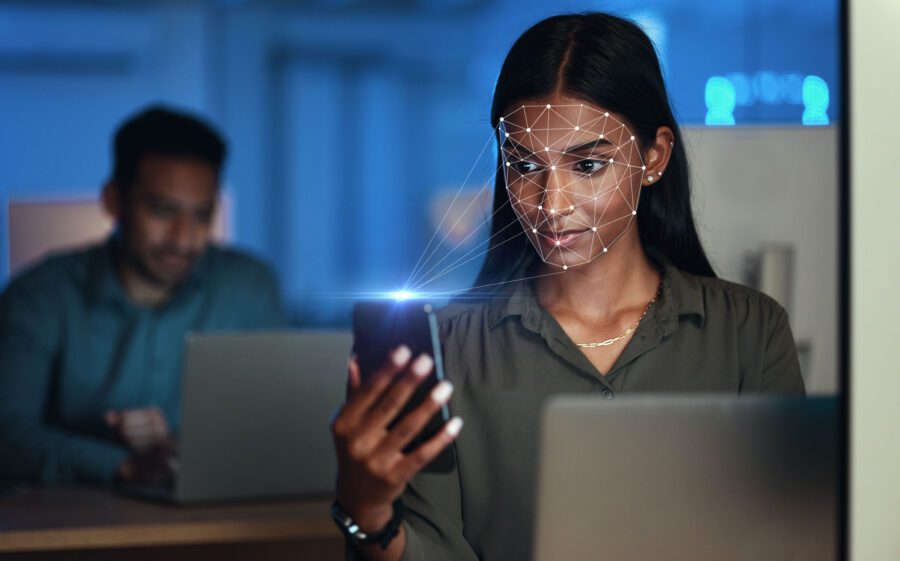
Biometric authentication systems are one of the most widespread and accessible forms of cyber hygiene in consumer products, and they’ve gone beyond phone face scanners to include more advanced technology.
Data scientists are interested in the myriad ways biometrics can secure information privacy and enhance authentication systems. How is this scanning technology making digital environments safer?
Biometric fusion is layered verification
Most people familiar with basic biometrics use it to unlock devices with a fingerprint or facial scan. These factors can be falsified, which is why biometric fusion could make verification systems stronger.
Fusion requires several modalities that simultaneously detect multiple biometric points to allow users access. These increased requirements make credentials more challenging to fabricate. Research shows multimodal biometrics lower the success rates of threat actors.
In addition to visual identifiers, devices can use behavioral biometrics to reinforce security measures. This detection method adds another layer of protection by verifying the authenticity of a user’s physical movements. Behavioral biometrics also analyzes online interactions by tracking speed, pressure and voice patterns. This innovation could help the 33% of people who find multifactor authentication methods too cumbersome to use.
Models and algorithms improve recognition accuracy
Experts in data science are experimenting with several modeling and algorithmic strategies to boost the accuracy and efficiency of biometric services.
The first is principal component analysis (PCA), which reconstructs the user’s most relevant identifying features as a computational model. While extrapolating images this way is efficient, it has room to improve regarding accuracy.
Other models include artificial firefly swarm optimization. This model had 88.9% accuracy compared to PCA’s 80.6% when identifying and matching faces. It achieved success by noticing movement and brightness points on the face and considering how these visual changes signify different features and proportions.
Enhancing accuracy is vital, especially if delicate sectors like law enforcement incorporate biometrics, artificial intelligence and other technologies. Facial recognition for scanning criminals has demonstrated poor accuracy in the past, making 45% of adults ambivalent about the use of similar tech in law enforcement.
Adaptive biometrics consider the passage of time
If someone is still using the same electronics for over a decade, their biometric identifiers could irreversibly change. Authentication can struggle to accurately process aging, injuries and other circumstances, such as:
- Lifestyle- or health-related shifts that affect skin elasticity in fingerprints
- Changes in eye appearance due to ailments like cataracts
- Alterations in hand structure because of arthritis
- Voice and pitch changes because of atrophy, lung capacity or puberty
These shifts in mobility or appearance are often outside the user’s control. Data scientists are working hard to uncover ways to teach biometrics to understand and adapt to these human changes. Preventing lockouts and security flags for unavoidable biometric differences is essential for maintaining quality user experience.
Data scientists and tech users alike will need to consider the impact of biometric innovation on other cybersecurity over time. Hackers will find innovative ways to compromise biometric advances as much as other protective measures, accenting the need for holistic security in all devices. Security measures like using unique passwords and recognizing phishing scams demand the same level of attentiveness as the threat landscape evolves.
Securing information lowers false positives
Incorrect identification can happen, especially in different lighting conditions or if the authenticator is wearing a mask or sunglasses. Data scientists have made it possible for biometrics to understand these varied circumstances by storing data more efficiently. It could lead to fewer false positives.
Differential privacy is a way to hold onto personally identifiable information to improve authentication without sacrificing security, particularly for fingerprint detection. It can collect the user’s biometrics in many settings, including places with visual noise or poor connectivity. Eventually, the authenticator can verify accurately without mistaking the genuine user for an impostor.
Biometric authentication can also work in conjunction with anomaly detection empowered by machine and deep learning models. Over time, biometrics will learn the numerous variations of the user without compromising defensive integrity.
The addition of behavioral biometrics could be useful in this context. For example, if it is atypical for a user to use biometric authentication in certain geographic locations, the authenticator could flag the request as uncharacteristic despite a passable appearance. It could also notice when the person is repeatedly attempting to authenticate outside of normal patterns, like specific times of day. These warnings could prompt additional verification measures while training the model to be more nuanced.
Data science strengthens biometric authentication
Cybersecurity analysts and data scientists know biometric protections require a diverse set of strategies. In the future, biometric-based security will only become more adept at parsing data accurately and empowering other defensive strategies. The applications of biometric authentication will be more flexible than ever, making electronics safer to use in any environment.

I learned a lot from this post—thank you!